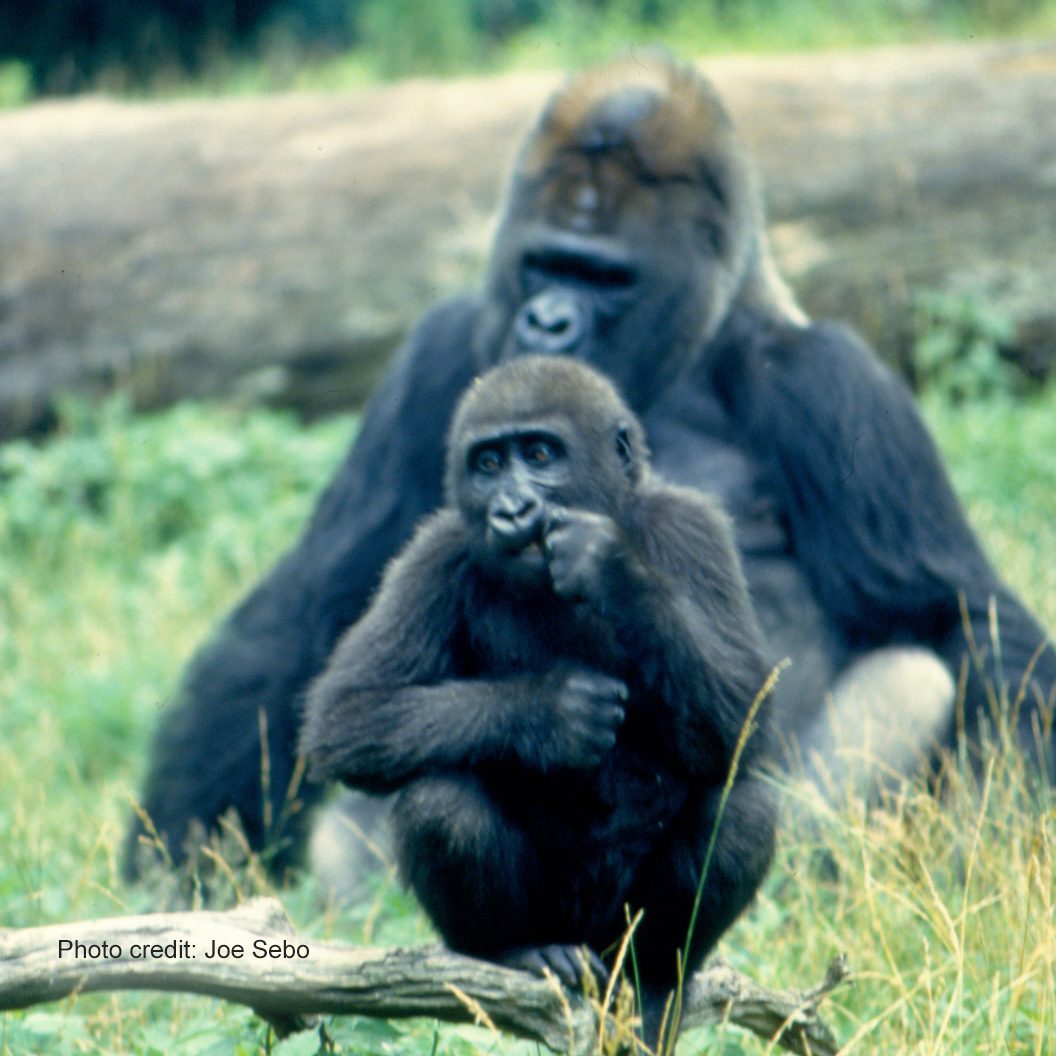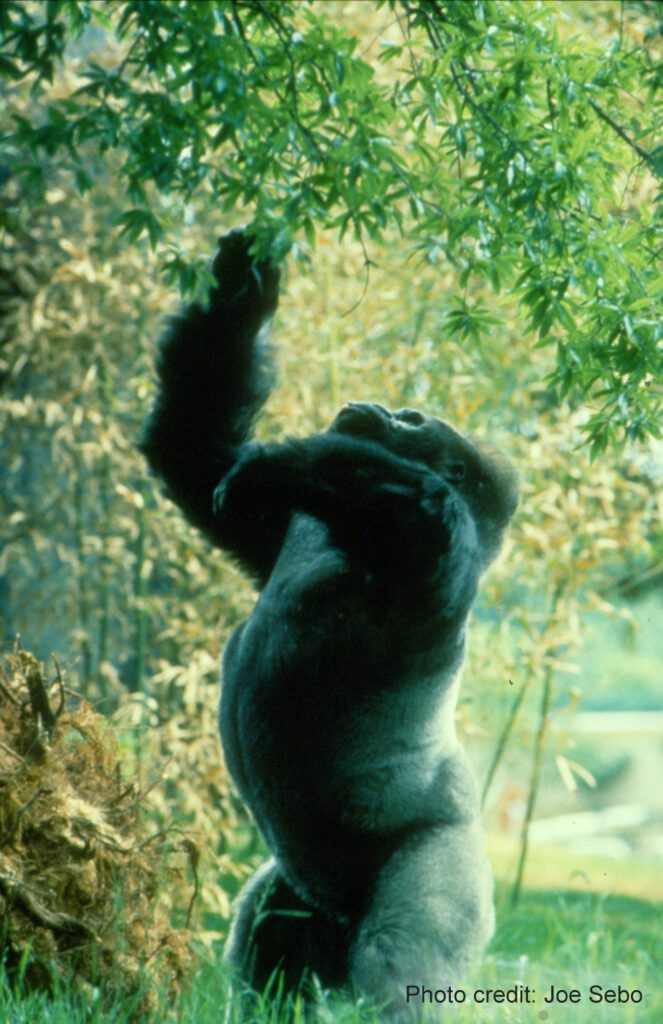
Apr 16, 2023 The Socialization of Willie B. – Part 2
In graduate school at the University of California at Davis, I specialized in primate socialization and attachment disruption when animals were separated from their mothers at an early age. I was as prepared as anyone to evaluate Willie B’s prospects for socialization, but his future was uncertain when I was introduced to him in 1975. His home at the Atlanta Zoological Park was a municipal facility short of funding and long neglected by city fathers. Confined behind steel bars and unbreakable glass barriers, even his cage furniture was composed of concrete and tile materials, the epitome of “hard architecture.” Even with the provision of straw, comfort was not easy to achieve. What a contrast to the natural habitat of wild gorillas. I wondered whether he harbored distant memories of his infancy when immersed in lush rainforest vegetation.
From time to time, Willie’s plight was discussed by local media, but the City of Atlanta never addressed the zoo’s condition. Much of the parks and recreation budget had been confiscated to move the Milwaukee Braves to Atlanta. Major League Baseball was so crucial to the city’s economy that citizens hardly noticed the deteriorating zoo in its midst. Those who did care about the zoo and Willie B. organized a nonprofit zoological society modeled on those that supported the best zoos in Chicago, New York, and San Diego. The bylaws of the Atlanta Zoological Society were influenced by two primatologists, Dr. Geoffrey Bourne and Dr. Duane Rumbaugh. Dr. Bourne was the director of the esteemed Yerkes National Primate Research Center at Emory University, while Dr. Rumbaugh was Chairman of the Psychology Department at Georgia State University. Working with local attorney Richard Reynolds, they crafted a document that called for a zoological park with a scientific foundation. I joined the board they formed in 1976 and took my place as an advocate for reform. In time, corporate community members offered their support, and the Society began to make noise and raise money. The stage was set for a better zoo, but it took a management scandal to ignite the fire of change.
 The zoo had an accreditation inspection conducted by the Association of Zoos and Aquariums, but it failed miserably. The Association followed up by rescinding the zoo’s membership credentials. The Atlanta Zoo was now a national pariah and the subject of investigative reporting from dozens of media outlets nationwide. Thankfully, the city government teamed up with business leaders and began to study alternatives to municipal management of the zoo. A public/private partnership was ultimately proposed, and the nonprofit Zoo Atlanta was incorporated in 1985.
The zoo had an accreditation inspection conducted by the Association of Zoos and Aquariums, but it failed miserably. The Association followed up by rescinding the zoo’s membership credentials. The Atlanta Zoo was now a national pariah and the subject of investigative reporting from dozens of media outlets nationwide. Thankfully, the city government teamed up with business leaders and began to study alternatives to municipal management of the zoo. A public/private partnership was ultimately proposed, and the nonprofit Zoo Atlanta was incorporated in 1985.
Mayor Andrew Young gave the new plan his full support, and following a historic meeting in his office, he asked me to become interim director of the zoo. My expertise in animal welfare science was needed to ensure that animals would no longer suffer at the zoo. I would need much support to lead this effort, and it arrived when Ford Motor Company and the Yerkes Primate Research Center entered into a partnership to design and build one of the world’s best gorilla exhibits. The Ford African Rainforest exhibit opened in 1988, becoming the home for Willie B. and eight other lowland gorillas from Yerkes.
World-class landscape architects Coe and Lee designed a highly innovative naturalistic exhibit with four habitats for gorilla families. All of the gorillas were introduced to lush landscapes for the first time and thrived in the enriched environment. When Willie B. stepped into the forest landscape for the first time, a crowd of local zoo supporters had been assembled to witness his liberation. There wasn’t a dry eye in the house. His photo consuming his first bite of vegetation was broadcast to every media outlet worldwide. We had dreamed about a story in National Geographic, and sure enough, they sent one of their best photographers to capture the event. Our sponsors at the Ford Motor Company were delighted.
The three Yerkes groups began to breed immediately and produced offspring in the first year. But we had not forgotten Willie. No one knew whether he would successfully socialize with other gorillas, but we had to try. His first consort, Kinyani, liked him, and after a few months, they copulated for the first time. Lead keeper Charles Horton called me to the exhibit to witness the event. It was a significant milestone for Willie B, who was now a social gorilla with a demonstrated sex drive.
The best part of the story is that Willie B. eventually occupied the enclosure containing the largest group of gorillas at the zoo and sired five offspring. He proved very popular with the Yerkes’ adult females. He was not only a successful silverback but was also a playful and caring father to his offspring. Our socialization experiment exceeded our expectations, and Willie B’s fame contributed to his reputation as Atlanta’s iconic ape.
Willie’s transformation is a remarkable story. Our community stepped up to save our zoo and deliver a facility that elevated Zoo Atlanta to leadership status among world zoos. The combination of big ideas and business acumen was a tremendous success, and everybody was justifiably proud of what a team effort could achieve. As Mayor Young proclaimed, Zoo Atlanta is the most important privatization experiment in the history of Georgia and is a model for other nonprofit zoological parks.


